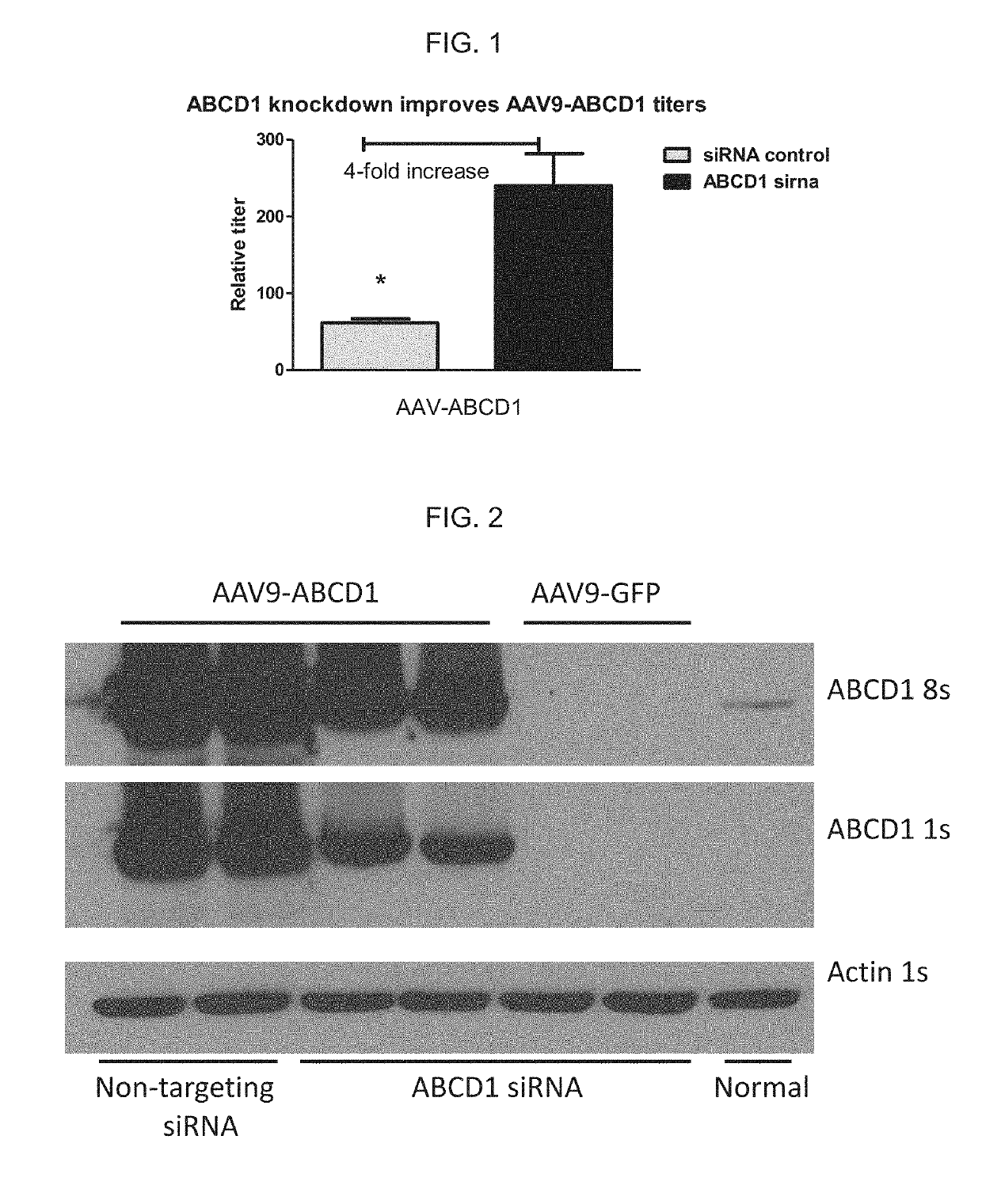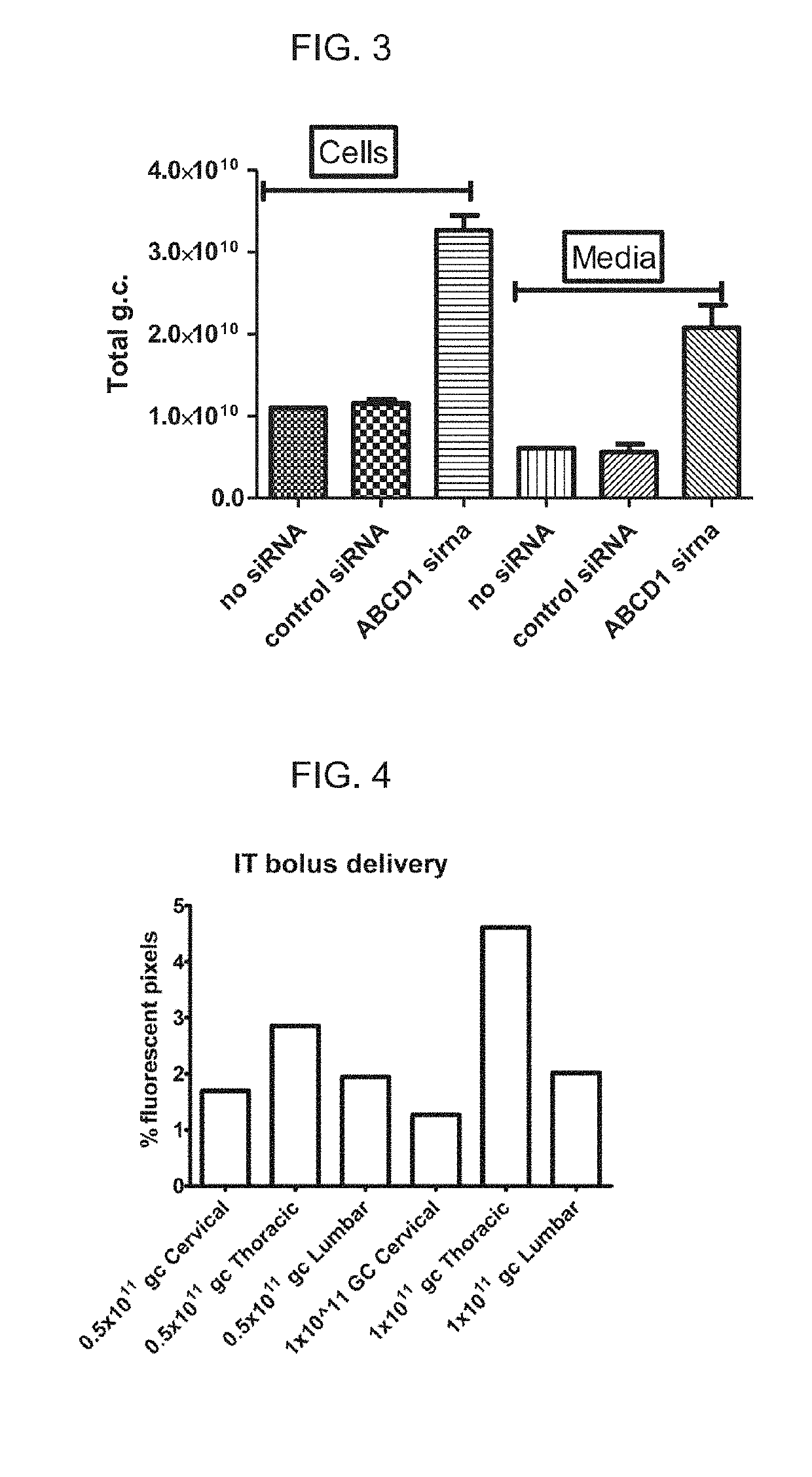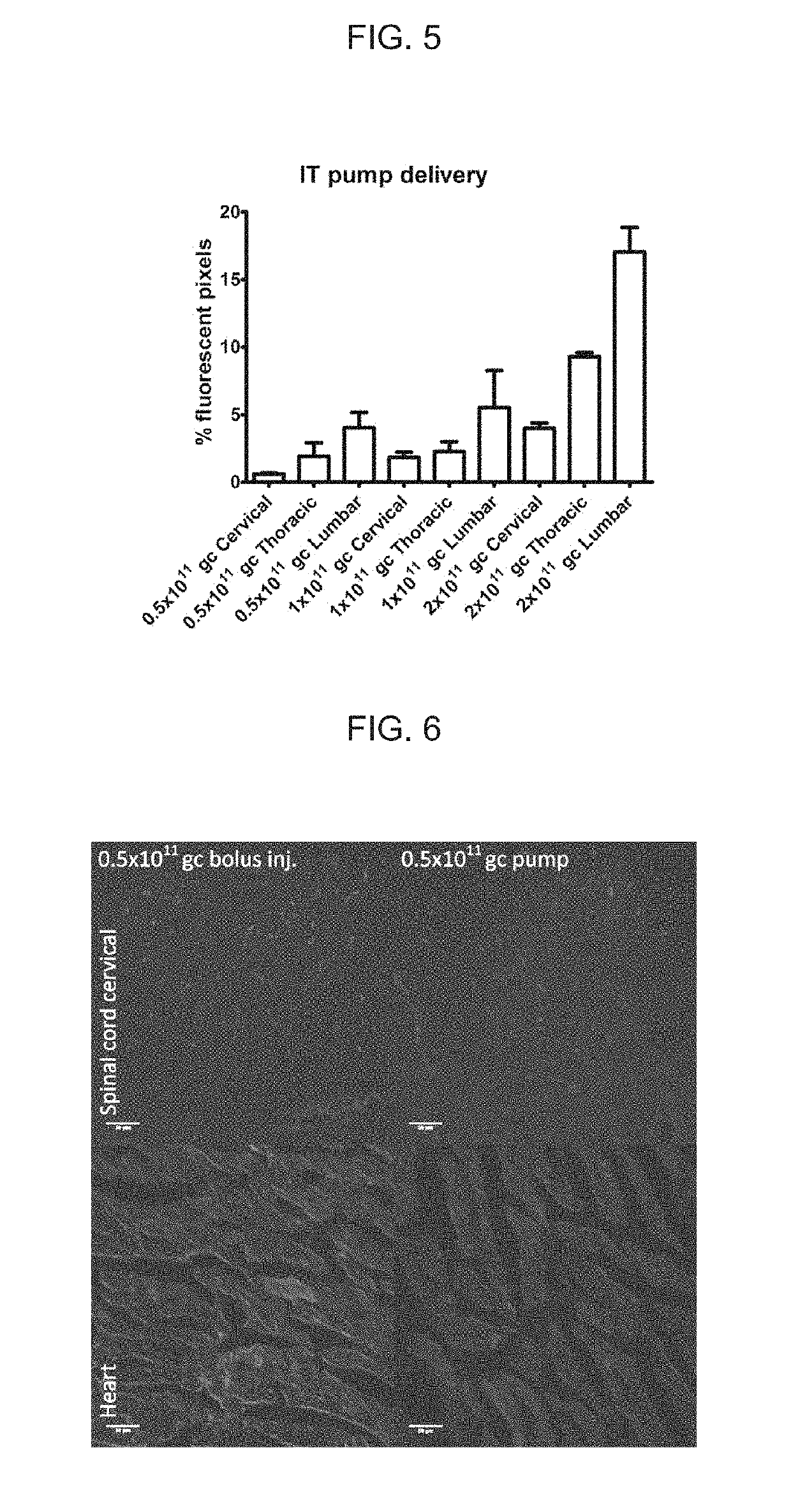Intrathecal delivery of nucleic acid sequences encoding abcd1 for treatment of adrenomyeloneuropathy
a technology of adrenomyeloneuropathy and nucleic acid sequences, which is applied in the direction of drug compositions, peptide/protein ingredients, recovery/purification, etc., can solve the problem that intravenous delivery in young mice is associated with cardiac toxicity
- Summary
- Abstract
- Description
- Claims
- Application Information
AI Technical Summary
Benefits of technology
Problems solved by technology
Method used
Image
Examples
example 1
n of AAV9-ABCD1 in the Presence of siRNA Specific for ABCD1 mRNA Improves AAV Vector Titers from Transfected 293T Cells
[0082]A high amount of cell death / cytopathic effects during production of AAV9-ABCD1 has been previously observed, likely due to overexpression of ABCD1 protein in producer cells. This toxicity reduced AAV vector yields. To mitigate the toxicity and improve vector yields, ABCD1 mRNA was targeted using a pool of siRNAs.
[0083]AAV packing was carried out as follows. 1-1.5×107 293 T cells were plated on 15 cm plates in and cultured overnight.
TABLE 1Packaging and Collection MediaDMEM High Glucose, HEPESDMEM 10% FBS 1% p / sDMEM 2% FBS 1% p / s2.5 mM Hepes buffer2M CaCl2x Hebs buffer, pH 7.04-7.047PBSTrypsinNaCl, 50 mM HEPES, 1.5 mMNa2HPO45 mM EDTA
[0084]On day 2, transfection mix was prepared as follows:
TABLE 2Transfection MixTube ATube BVector Construct 10 ug2x Hebs 780 ulAdenovirus helper 26 ug**Serotype plasmid 12 ug2M CaCl 96.92.5 mM Hepes up to 780 ulTotal Volume 780 ulT...
example 2
al Delivery of rAAV9-ABCD1 by Osmotic Pump in a Mouse Model of Adrenomyeloneuropathy Leads to More Uniform and Widespread Gene Delivery to the CNS
[0108]Self-complementary AAV9 GFP(scAAV9GFP) and rAAV9 encoding ABCD1 (rAAV9-ABCD1) were delivered to Abcd1− / − mice intrathecally (IT) either by bolus over a 2 minute duration or by osmotic pump over 24 hour duration with PBS injection as sham control. Two weeks after injection, mice were sacrificed and perfused with 4% PFA. Tissues were then collected, sectioned and stained for immunofluorescence analysis.
[0109]scAAV9-GFP delivered IT by osmotic pump led to widespread expression across CNS-relevant cell types and DRGs in a dose-dependent manner. Spinal cord and DRG had higher expression compared with brain, but GFP expression was also detected in peripheral organs (liver, heart and adrenal gland), with highest expression seen at 3×1011GC.
[0110]A similar distribution pattern of ABCD1 protein was detected after rAAV9-ABCD1 intrathecal pump ...
example 3
iated ABCD1 Gene Transfer Via Intrathecal Osmotic Pump Leads to a Reduction in C26:0 Levels in the Spinal Cord
[0113]C26:0 is the biochemical hallmark of adrenomyeloneuropathy. To assess for the presence of free very long chain fatty acids (VLCFA) after AAV9 gene delivery, lipidomic analysis was performed on spinal cord samples. Absolute values of C26:0 and C24:0 as well as ratios of C26:0 / C22:0 are reported. It was determined that rAAV9-mediated ABCD1 gene transfer via intrathecal osmotic pump (1×1011gc) leads to a 20% reduction in C26:0 levels in the spinal cord (FIG. 13). The levels after intrathecal osmotic pump delivery are comparable to those after intrathecal bolus delivery but avoid systemic leakage.
[0114]Immunofluorescence staining and confocal microscopy imaging were additionally conducted. For tissue section imaging, sections of spinal cord (16 μm) were cut at −25° C. using cryostat (Leica) and stored at −80° C. Sections were stained with mouse antihuman ABCD1 antibody and...
PUM
| Property | Measurement | Unit |
|---|---|---|
| temperatures | aaaaa | aaaaa |
| temperatures | aaaaa | aaaaa |
| temperatures | aaaaa | aaaaa |
Abstract
Description
Claims
Application Information
 Login to View More
Login to View More - R&D
- Intellectual Property
- Life Sciences
- Materials
- Tech Scout
- Unparalleled Data Quality
- Higher Quality Content
- 60% Fewer Hallucinations
Browse by: Latest US Patents, China's latest patents, Technical Efficacy Thesaurus, Application Domain, Technology Topic, Popular Technical Reports.
© 2025 PatSnap. All rights reserved.Legal|Privacy policy|Modern Slavery Act Transparency Statement|Sitemap|About US| Contact US: help@patsnap.com



